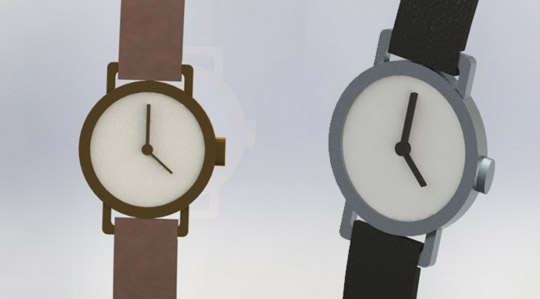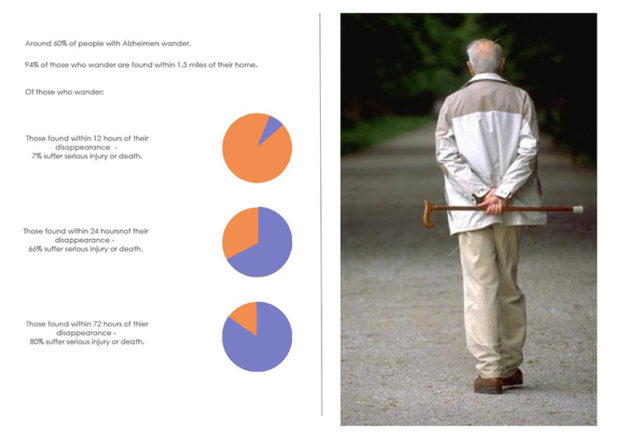 Alzheimer’s disease is a chronic neurodegenerative disease that slowly but inexorably robs a person of their short-term memory and other mental functions. Alzheimer’s patients have also been known to wander away and later find themselves unable to return home. The longer and further they are away, the higher the chance that they will suffer a serious injury or even death. The Aika smartwatch concept by the U.K.’s Rebecca Whittle looks to address this particular issue.
Alzheimer’s disease is a chronic neurodegenerative disease that slowly but inexorably robs a person of their short-term memory and other mental functions. Alzheimer’s patients have also been known to wander away and later find themselves unable to return home. The longer and further they are away, the higher the chance that they will suffer a serious injury or even death. The Aika smartwatch concept by the U.K.’s Rebecca Whittle looks to address this particular issue.

The Aika smartwatch is described as “an assistive technology device designed to keep Alzheimer’s sufferers safe while wandering.” It looks like a normal watch and functions as such most of the time to remove the stigma associated with existing tracker designs.” But it also comes a GPS chipset and cellular connectivity.
Behind the Aika is a call centre where emergency calls are routed. It ensures that someone can respond to the patient at any time of the day or night. Should the wearer find themselves in unfamiliar surroundings or in need of assistance, pressing the panic button will immediately put them in touch with a call centre agent. That person can then determine how best to assist the patient. It could be providing directions to guide them back home or dispatching an emergency contact to go to them. An email notification is also sent to a listed emergency contact, a family relative or friend for example, to alert them of the request for help.
The Aika smartphone also comes with a website that provides caregivers and family the ability to check the location of the patient at any time. It can also be used to reach a call centre agent who can then reach out to the patient.
The best part about the Aika smartwatch concept is that there are no technologies in it that prevent it from being turned into reality today. It could easily be offered in a range of styles for both men and women. Its OLED display would offer both analog and digital watch faces for further customization.
The biggest challenges would likely be that the Alzheimer’s patient may not remember that they are wearing the smartwatch when they need to use it or to recharge it regularly (a reminder could help address that though). Fortunately, it would provide enough information to caregivers (when working) for them to take action without the need to even speak to the patient.
Source : Behance
